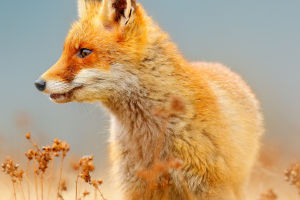The antelope is a subfamily of the bovine family consisting of many different species found in Africa, Asia, and Europe. They have slender legs and a deer-like body shape, making them excellent runners.
Antelopes can be found from Mongolia to northern Africa, along the Atlantic coast, and throughout the equatorial regions of eastern and central Africa.
They usually inhabit open areas such as grasslands, meadows, and forest edges, feeding on a variety of herbaceous plants.
Antelopes are social animals and usually live in herds, sometimes forming large groups of hundreds or even thousands of individuals.
Antelopes have a keen sense of sight, hearing, and smell, enabling them to detect and escape from natural predators in time.
They also have special behaviors to protect themselves, such as jumping, wagging their tails, and making warning sounds.
Breeding season varies by species and generally begins after the end of the rainy season or drought. During this time, males compete for territory, and females, often in competitive ways such as wrestling or rushing.
Females give birth to one or two young per litter and care for their young in a secluded area until they can follow their mothers into the group.
One of the most precious antelopes is the Tibetan antelope, which is endemic to the Tibetan Plateau in China and is also one of the national-level protected and endangered animals.
The Tibetan antelope is mainly distributed in Qinghai, Tibet, and Xinjiang provinces in China, with the Cocoanut Cyrus in Qinghai Province as the center in a peripheral radial pattern.
They prefer to inhabit highland meadows and grasslands at altitudes of 4,600-6,000 meters and like to concentrate on flat grasslands near water sources.
Tibetan antelopes are robust, with a long, broad head and a stout muzzle. Males have long, straight, black, and shiny horns, while females have no horns or very small, inconspicuous horns.
Except for the cheeks, the lower part of the limbs, and the tail, the whole body is covered with thick and dense hair, and the whole body is light brown; the abdomen and the inside of the limbs are white.
Tibetan antelopes are seasonal migrants, starting to migrate to their natal site from late April to early May each year and returning to their original habitat to complete the migration process after giving birth to their young in mid to late June or late July.
The mating period is usually between late November and December, during which the males protect 10 to 20 females and compete with other males.
Antelopes play a vital role in the natural world, and protecting them is essential for maintaining ecological balance and human interests.
There are several ways to protect antelopes, including not destroying their living environment. Protecting the environment is crucial for the animals' survival, as they depend on their habitat.
Reporting any hunting activities around the Tibetan antelope is also recommended, but one should pay attention to personal safety when doing so.
Disliking or harming antelopes should not be an option, and instead, we should aim to become their good friends and respect them.
The antelope is a beautiful and precious animal that should be protected. The Tibetan antelope is a national-level protected and endangered animal that is endemic to the Tibetan Plateau in China.
By protecting their living environment and reporting any illegal activities, we can ensure their survival and contribute to the ecological balance.


